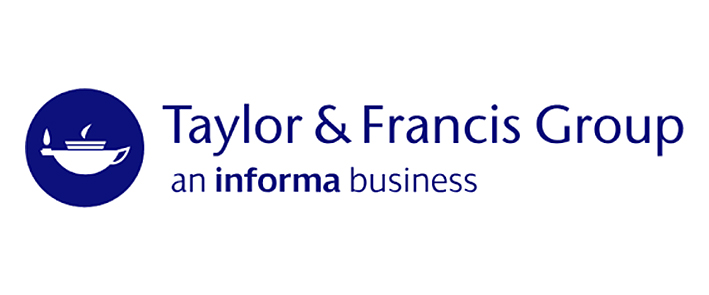MARC details
| 000 -LEADER |
|---|
| fixed length control field |
02238cam a22002897i 4500 |
| 001 - CONTROL NUMBER |
|---|
| control field |
136546 |
| 003 - CONTROL NUMBER IDENTIFIER |
|---|
| control field |
ISI Library, Kolkata |
| 005 - DATE AND TIME OF LATEST TRANSACTION |
|---|
| control field |
20160210151325.0 |
| 008 - FIXED-LENGTH DATA ELEMENTS--GENERAL INFORMATION |
|---|
| fixed length control field |
150622t20152015flu b 001 0 eng d |
| 020 ## - INTERNATIONAL STANDARD BOOK NUMBER |
|---|
| International Standard Book Number |
9781482250985 (alk. paper) |
| 040 ## - CATALOGING SOURCE |
|---|
| Original cataloging agency |
ISI Library |
| Language of cataloging |
eng |
| 082 04 - DEWEY DECIMAL CLASSIFICATION NUMBER |
|---|
| Classification number |
302.1301511313 |
| Edition number |
23 |
| Item number |
M834 |
| 100 1# - MAIN ENTRY--PERSONAL NAME |
|---|
| Personal name |
Mordeson, John N. |
| 245 10 - TITLE STATEMENT |
|---|
| Title |
Application of fuzzy logic to social choice theory / |
| Statement of responsibility, etc |
John N. Mordeson, Davender S. Malik and Terry D. Clark. |
| 260 ## - PUBLICATION, DISTRIBUTION, ETC. (IMPRINT) |
|---|
| Place of publication, distribution, etc |
Boca Raton : |
| Name of publisher, distributor, etc |
CRC Press, |
| Date of publication, distribution, etc |
c2015. |
| 300 ## - PHYSICAL DESCRIPTION |
|---|
| Extent |
xi, 340 p. ; |
| Dimensions |
24 cm. |
| 490 0# - SERIES STATEMENT |
|---|
| Series statement |
Monographs and research notes in mathematics |
| 504 ## - BIBLIOGRAPHY, ETC. NOTE |
|---|
| Bibliography, etc |
Includes bibliographical references and index. |
| 505 0# - FORMATTED CONTENTS NOTE |
|---|
| Formatted contents note |
1. Fuzzy maximal subsets -- <br/>2. Fuzzy choice functions -- <br/>3. Factorization of fuzzy preference relations -- <br/>4. Fuzzy non-arrow results -- <br/>5. Fuzzy Arrow's theorem -- <br/>6. Single peaked fuzzy preferences : Black's median voter theorem -- <br/>7. Rationality -- <br/>8. Arrow-type results under intuitionistic fuzzy preferences -- <br/>9. Manipulability of fuzzy social choice functions -- <br/>10. Similarity of fuzzy choice functions --<br/>Index. |
| 520 ## - SUMMARY, ETC. |
|---|
| Summary, etc |
The book explains the concept of a fuzzy maximal subset of a set of alternatives, fuzzy choice functions, the factorization of a fuzzy preference relation into the "union" (conorm) of a strict fuzzy relation and an indifference operator, fuzzy non-Arrowian results, fuzzy versions of Arrow’s theorem, and Black’s median voter theorem for fuzzy preferences. It examines how unambiguous and exact choices are generated by fuzzy preferences and whether exact choices induced by fuzzy preferences satisfy certain plausible rationality relations. The authors also extend known Arrowian results involving fuzzy set theory to results involving intuitionistic fuzzy sets as well as the Gibbard–Satterthwaite theorem to the case of fuzzy weak preference relations. The final chapter discusses Georgescu’s degree of similarity of two fuzzy choice functions.<br/> |
| 650 #0 - SUBJECT ADDED ENTRY--TOPICAL TERM |
|---|
| Topical term or geographic name as entry element |
Social choice |
| General subdivision |
Mathematical models. |
| 650 #0 - SUBJECT ADDED ENTRY--TOPICAL TERM |
|---|
| Topical term or geographic name as entry element |
Fuzzy decision making. |
| 650 #0 - SUBJECT ADDED ENTRY--TOPICAL TERM |
|---|
| Topical term or geographic name as entry element |
Set theory. |
| 700 1# - ADDED ENTRY--PERSONAL NAME |
|---|
| Personal name |
Malik, Davender S., |
| Relator term |
author |
| 700 1# - ADDED ENTRY--PERSONAL NAME |
|---|
| Personal name |
Clark, Terry D., |
| Relator term |
author. |
| 942 ## - ADDED ENTRY ELEMENTS (KOHA) |
|---|
| Source of classification or shelving scheme |
Dewey Decimal Classification |
| Koha item type |
Books |


























